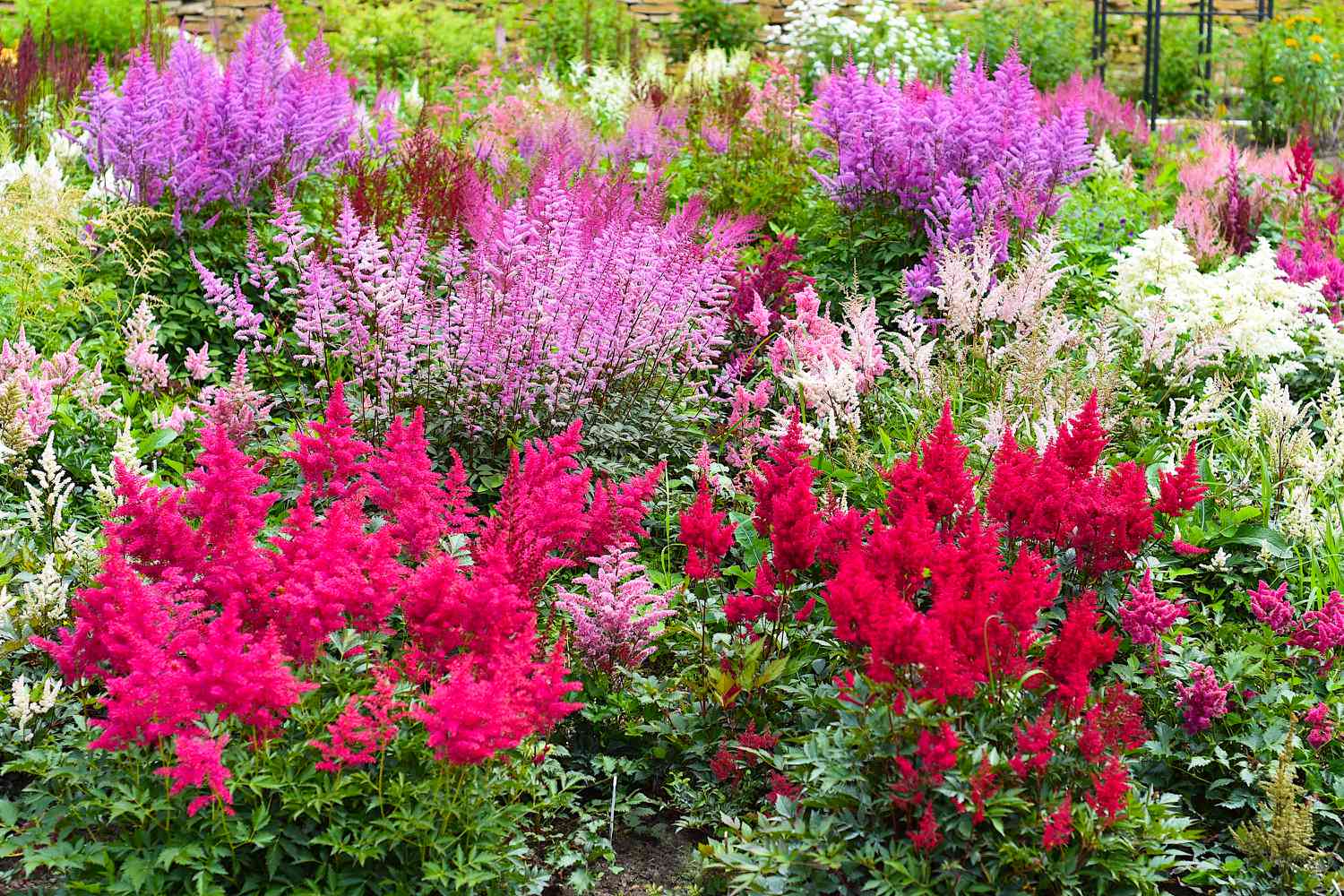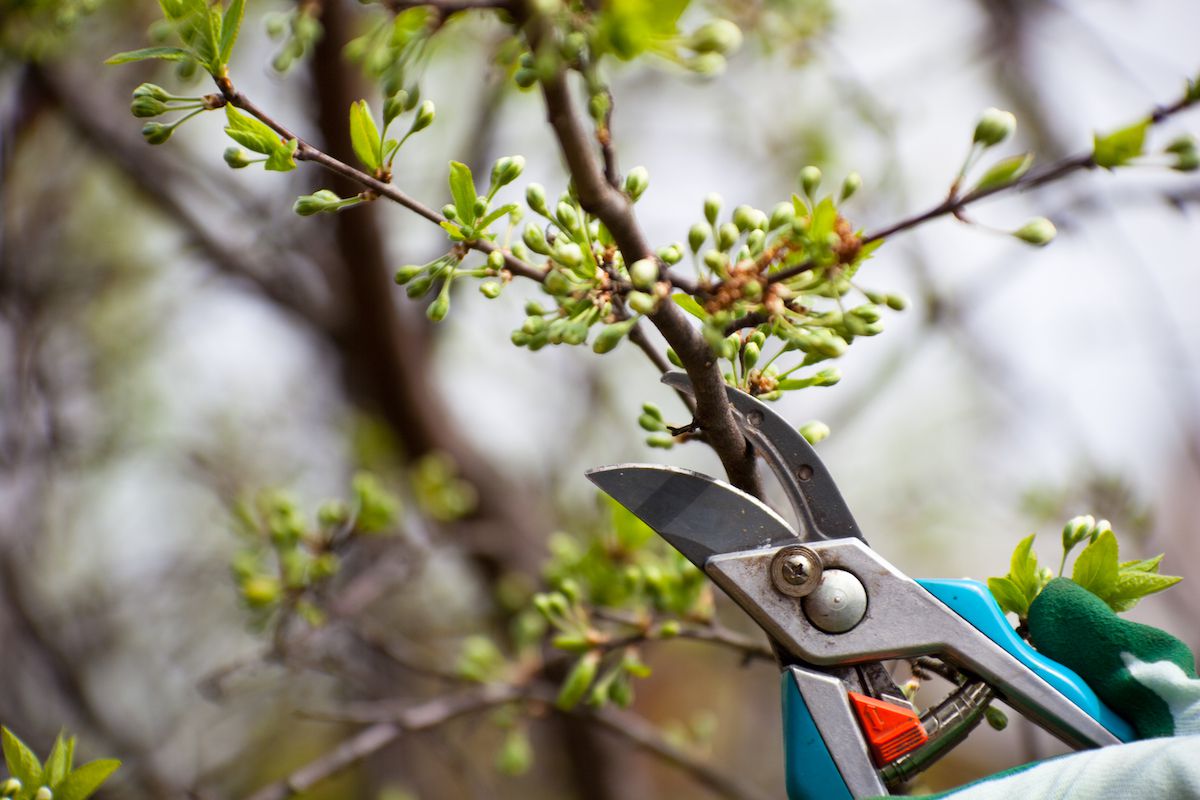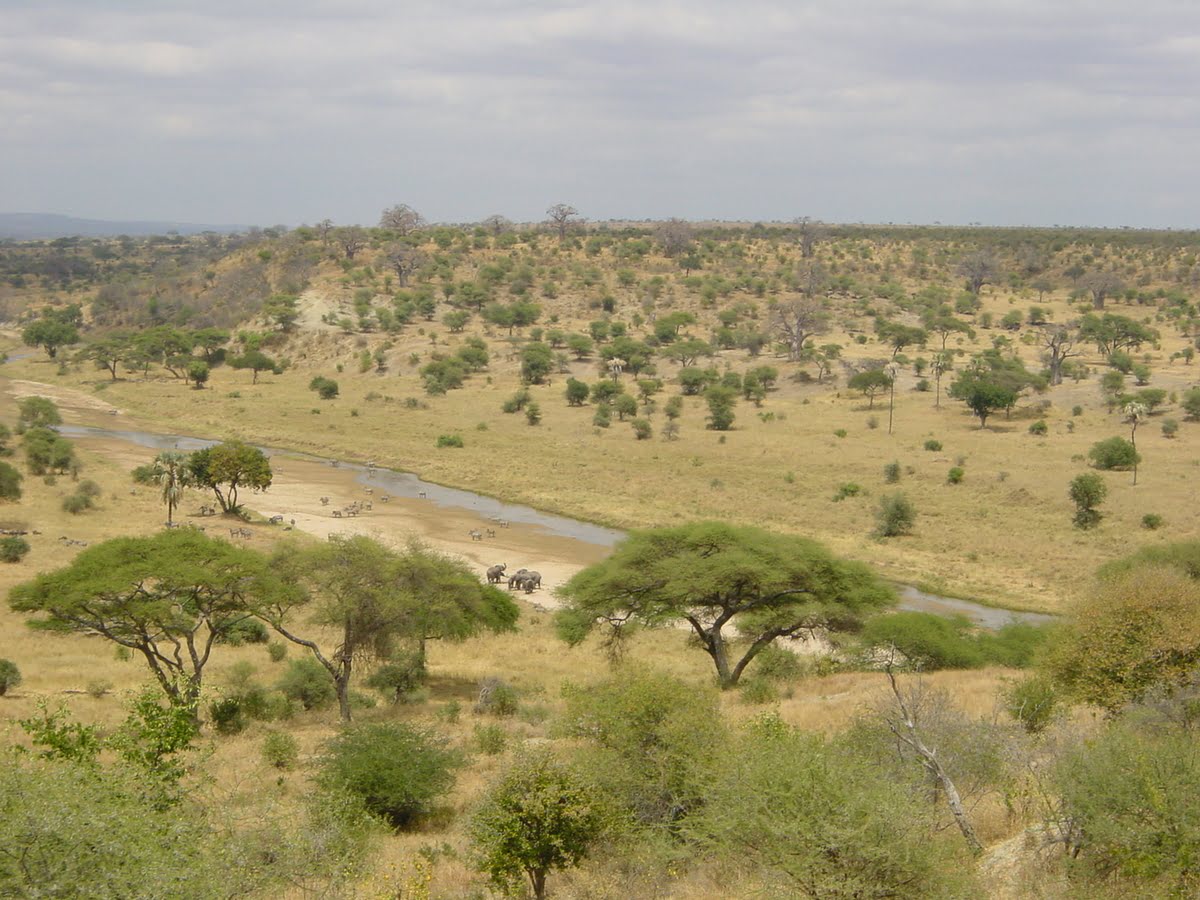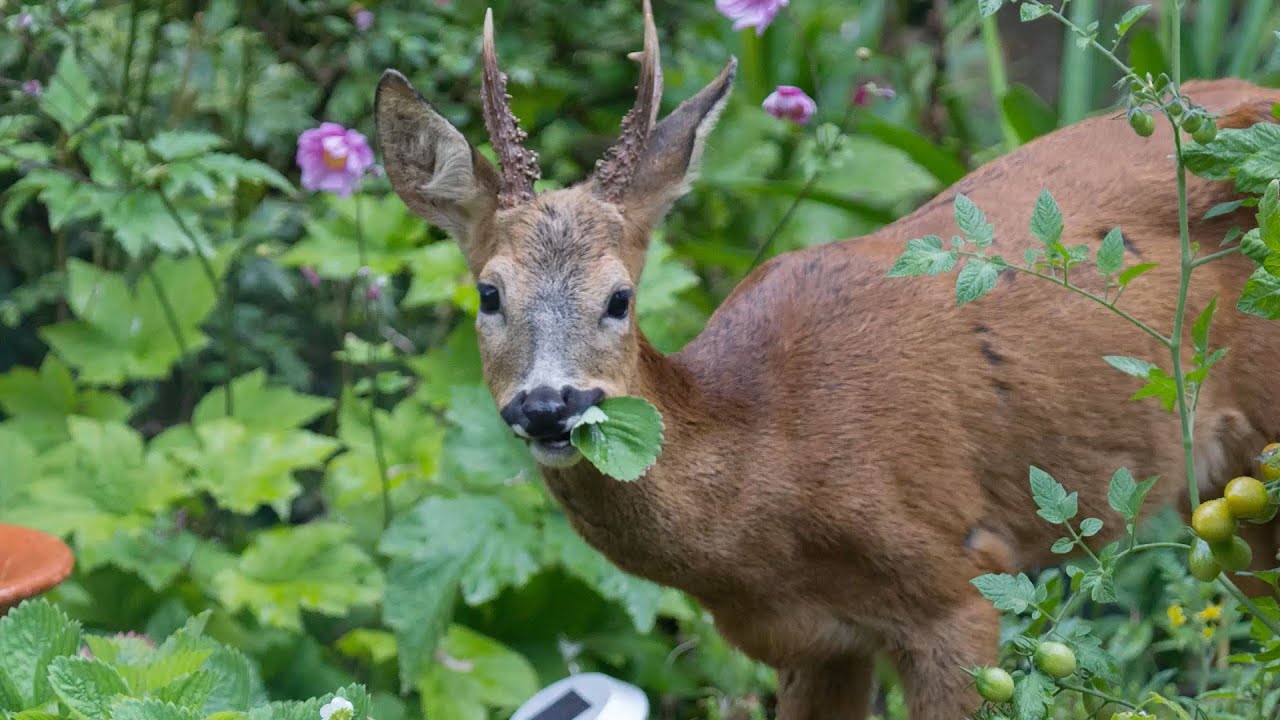Home>Gardening News and Trends>Latest News>What Comes After Shrubs In A Normal Succession?


Latest News
What Comes After Shrubs In A Normal Succession?
Modified: January 22, 2024
Discover the latest news on what comes after shrubs in a normal succession. Stay updated with the most recent findings and insights in ecological succession.
(Many of the links in this article redirect to a specific reviewed product. Your purchase of these products through affiliate links helps to generate commission for Chicagolandgardening.com, at no extra cost. Learn more)
Table of Contents
Introduction
Succession is a natural process that occurs in ecosystems over time. It refers to the sequential and predictable changes that take place in plant and animal communities following a disturbance or the establishment of a new habitat. These changes can be observed in various environments, such as forests, grasslands, and wetlands. Understanding the different stages of succession is essential for ecologists and land managers to effectively restore and manage ecosystems.
One significant stage in ecological succession is the transition from herbaceous plants to shrubs. While shrubs may appear to be the climax of succession, it is important to recognize that succession continues beyond this point, resulting in the establishment of other plant communities. This article will explore what comes after shrubs in a normal progression of succession, highlighting the key factors that drive these changes.
Benefits of Shrubs in Succession
Before delving into the subsequent stages of succession, it is crucial to acknowledge the important role that shrubs play in the process. Shrubs act as pioneer species and colonizers, often being the first plants to establish in a disturbed area. Their deep roots help stabilize the soil, preventing erosion and providing a suitable environment for other plants to grow.
Shrubs also offer a variety of niches for wildlife, providing shelter, food sources, and nesting sites. They contribute to increasing biodiversity and creating a more complex and resilient ecosystem. Additionally, shrubs play a vital role in nutrient cycling, as they help accumulate organic matter from leaf litter and provide habitats for soil microorganisms.
Key Factors Driving Succession Beyond Shrubs
Several factors influence the progression of succession beyond the shrub stage. One of the primary drivers is the availability of resources, such as sunlight, water, and nutrients. As the shrub canopy thickens, it can shade out and limit the amount of sunlight reaching the lower layers, creating a more shaded microclimate. This change in light availability influences the type of plants that can grow and compete successfully in the ecosystem.
In addition to resource availability, disturbances play a role in shaping the trajectory of succession. Natural disturbances like fires, floods, and windstorms can reset the successional clock, creating opportunities for new species to establish. These disturbances can damage or remove the existing vegetation, allowing for the colonization of different plant species.
Another important factor is the presence of animal species that interact with the plants in the ecosystem. Animals can contribute to succession by dispersing seeds, pollinating flowers, or creating microsites through grazing or burrowing activities. These interactions between plants and animals can shape the composition and structure of plant communities beyond the shrub stage.
Benefits of Shrubs in Succession
Shrubs play a crucial role in the process of ecological succession. As pioneer species and colonizers, they are often the first plants to establish in a disturbed area, paving the way for the establishment of other plant communities. The presence of shrubs brings several benefits to the ecosystem.
- Soil Stabilization: One key advantage of shrubs is their ability to stabilize the soil. Their deep and extensive root systems help bind the soil particles together, reducing the risk of erosion. This is especially important in areas that have experienced disturbances such as wildfires or landslides. The stable soil provided by shrubs creates a suitable environment for other plant species to take root and grow.
- Biodiversity: Shrubs contribute to increasing biodiversity in ecosystems. Their presence creates a more complex and diverse habitat, offering a variety of niches for different species. Shrubs provide shelter, food sources, and nesting sites for a wide range of wildlife, including birds, insects, and small mammals. This increase in biodiversity enhances the overall resilience and ecological stability of the ecosystem.
- Nutrient Cycling: Shrubs play an essential role in nutrient cycling within ecosystems. They accumulate organic matter from leaf litter and other plant debris, which decomposes and enriches the soil. This process releases essential nutrients, making them available to other plants and supporting their growth. By cycling nutrients, shrubs help sustain the health and functioning of the ecosystem.
- Successional Progression: As pioneer species, shrubs help initiate the process of succession. They are often the first plants to establish in a disturbed area, laying the groundwork for the colonization of other plant species. By acting as colonizers, shrubs transform barren or disturbed landscapes into vibrant and diverse ecosystems over time.
- Carbon Sequestration: Shrubs contribute to carbon sequestration, which helps mitigate climate change. Through the process of photosynthesis, shrubs absorb carbon dioxide from the atmosphere and store it in their biomass. This helps reduce the greenhouse effect and the accumulation of carbon dioxide in the atmosphere, making shrubs an important ally in the fight against climate change.
The benefits provided by shrubs extend beyond their individual presence in the ecosystem. They create favorable conditions for the establishment of other plant species and facilitate the transition to subsequent stages of succession. As such, shrubs play a vital role in the overall health and sustainability of ecosystems.
Key Factors Driving Succession Beyond Shrubs
The progression of succession beyond the shrub stage is influenced by various key factors that shape the dynamics of the ecosystem. These factors play a significant role in determining the composition and structure of plant communities as succession continues.
Resource Availability: One of the primary drivers of succession beyond shrubs is the availability of resources such as sunlight, water, and nutrients. As shrubs grow and their canopy thickens, they can create a more shaded microclimate beneath them. This decrease in light availability impacts the types of plants that can thrive in the ecosystem. Shade-tolerant plant species that are adapted to lower light conditions may establish and compete for limited resources, gradually replacing the shrub species.
Disturbances: Natural disturbances, such as wildfires, floods, windstorms, or even human-induced disturbances like logging or land clearing, can reset the successional clock and play a crucial role in driving succession beyond the shrub stage. These disturbances can create open spaces or remove existing vegetation, providing opportunities for new species to colonize the area. Pioneer species that are well-adapted to disturbance conditions may establish in these bare sites, initiating a new phase of succession.
Animal Interactions: The presence of animals in the ecosystem can also shape the progression of succession beyond shrubs. Animals play a vital role in plant reproduction through pollination and seed dispersal. Some animal species may have specific interactions with certain plant species, thereby influencing their abundance and distribution. Grazing animals can create disturbances and open patches, allowing for the colonization of new plant species. Burrowing animals can create microsites that provide favorable conditions for certain plants to establish.
Competition: Competition for resources becomes increasingly important as succession progresses beyond shrubs. As more plants establish and grow, there is greater competition for sunlight, water, and nutrients. Some species may be more efficient at capturing these resources and outcompete others, leading to shifts in plant dominance and changes in the plant community structure. These competitive interactions can shape the trajectory of succession beyond the shrub stage.
Climate and Soil Conditions: Climate and soil conditions also play a significant role in driving succession. Depending on the environmental conditions of a particular region, certain plant species may have a competitive advantage over others. For example, in wetter areas, species adapted to moist conditions may dominate, while in drier regions, species that are well-adapted to drought may prevail. Changes in climate patterns can also influence the successional trajectory by altering environmental conditions and favoring certain plant species.
The interplay of these factors contributes to the complex and dynamic nature of succession beyond shrubs. It highlights the importance of understanding the interactions and dynamics within an ecosystem to effectively manage and restore natural habitats.
Early Successional Species
After the shrub stage, the progression of succession continues with the establishment of early successional species. These species are typically characterized by their ability to thrive in harsh or disturbed environments and are often the first to colonize open areas.
Pioneer Plants: Pioneer plants are the initial colonizers of bare or disturbed sites. They have specialized adaptations that allow them to germinate and grow in challenging conditions, such as limited soil nutrients, high light intensity, or fluctuating moisture levels. Common examples of pioneer plants include annual grasses, mosses, lichens, and fast-growing herbaceous species. These species play a crucial role in soil development and stabilization, preparing the ground for other plant species.
Ruderal Species: Ruderal plants are opportunistic species that thrive in highly disturbed environments. They have rapid growth rates and high reproductive capacities, allowing them to quickly establish and reproduce in areas with frequent disturbances. Ruderal species often have short lifespans and produce large quantities of seeds for dispersal. Weedy species like dandelions, pigweed, or common ragweed are common examples of ruderal species.
Early Successional Trees: As succession progresses beyond shrubs, early successional trees may start to establish. These trees are typically fast-growing and are well-adapted to open, disturbed habitats. Examples include pioneer species like birch, aspen, or willow. These trees often have light, wind-dispersed seeds and can quickly establish themselves in open areas. They provide shade, shelter, and habitat for wildlife while creating favorable conditions for subsequent stages of succession.
Grasses and Forbs: Grasses and forbs play a crucial role in early succession. They are often the dominant plant species in open and sunny areas, especially in grassland ecosystems. Grasses have strong root systems that help stabilize the soil, preventing erosion. They are adapted to fire and grazing, making them resilient to disturbances. Forbs, on the other hand, are herbaceous flowering plants that add diversity to the early successional plant community. They provide a source of food and nectar for insects and serve as essential forage for grazing animals.
The establishment of early successional species sets the stage for the progression of succession, creating a foundation for the development of more diverse and complex plant communities. These species play a crucial role in soil development, habitat creation, and ecosystem functioning. As succession continues, the dominance of early successional species may gradually give way to a new wave of plant species adapted to more stable and shaded conditions.
Intermediate Successional Species
As ecological succession progresses beyond the early successional stage, the plant communities transition into the next phase, dominated by intermediate successional species. These species are characterized by their ability to tolerate moderate levels of shade and competition, gradually replacing the early successional species.
Shade-Tolerant Trees: Shade-tolerant trees play a significant role in the intermediate successional stage. These trees have adaptations that allow them to thrive under the shade of taller vegetation. They possess traits such as larger leaves, efficient light-capturing mechanisms, and the ability to allocate resources for shade tolerance. Common shade-tolerant tree species include beech, maple, and hemlock. These trees form a canopy layer, creating a shaded understory environment.
Understory Shrubs and Herbaceous Plants: Understory shrubs and herbaceous plants become more prominent as succession progresses. These species are adapted to growing in the shaded understory conditions created by the shade-tolerant trees. They contribute to the understory vegetation layer and provide additional layers of vegetative structure within the ecosystem. Examples of understory shrubs include mountain laurel, dogwood, and spicebush, while ferns, wildflowers, and mosses are common herbaceous understory species.
Slow-Growing Perennials: Slow-growing perennials begin to establish and compete with the earlier successional species. These plants typically have longer life spans and invest more resources into root development and nutrient uptake rather than rapid growth. Slow-growing perennials are well-adapted to the nutrient cycling dynamics of the ecosystem and are capable of surviving in lower resource availability. They contribute to the overall plant diversity and stability of the ecosystem.
Increased Biodiversity: The transition to intermediate successional species is often accompanied by an increase in biodiversity. As the canopy becomes more complex, with multiple layers of vegetation, it provides a diverse array of microhabitats for various organisms. This diversity supports a wider range of animal species, including birds, insects, and mammals, which rely on specific plant communities for food, shelter, and nesting sites.
Improvement of Soil Conditions: The presence of intermediate successional species contributes to soil improvement within the ecosystem. As these species grow, their root systems help stabilize the soil, preventing erosion and improving soil structure. Additionally, the decomposition of leaf litter and organic matter from the intermediate successional species contributes to nutrient cycling, enriching the soil with organic matter and essential nutrients.
The establishment of intermediate successional species marks a significant transition in the ecological succession process. By adapting to lower levels of light and increasing competition, these species modify the habitat and prepare the ground for the arrival of late successional species, which further shapes and refines the plant community composition.
Late Successional Species
In the later stages of ecological succession, the plant communities continue to evolve, eventually giving way to late successional species. These species are well-adapted to stable, mature environments and are typically shade-tolerant and long-lived.
Canopy Dominance: Late successional species often form the dominant canopy layer in mature ecosystems. They include long-lived and tall tree species such as oak, hickory, and beech. These trees have the ability to persist in the shade and compete successfully for limited resources. Late successional species contribute to the overall structure of the ecosystem, providing shade, habitat, and food sources for a diverse range of organisms.
Slow Growth and Longevity: Late successional species are characterized by their slow growth rates and long lifespans. This allows them to invest more resources into producing dense wood and maintaining their dominance over time. Their longevity contributes to the stability and resilience of the ecosystem, as they provide a continuous habitat and resources for other organisms.
Complex Understory: The understory of late successional ecosystems becomes increasingly diverse and complex, providing additional layers of vegetation. Shade-tolerant shrubs, ferns, and herbaceous plants thrive beneath the canopy, adding to the overall species diversity. These understory species play a crucial role in providing habitat and food sources for a variety of wildlife.
Specialized Species Interactions: Late successional species often rely on specialized interactions with other organisms. For instance, certain tree species may have specific mutualistic relationships with mycorrhizal fungi, which help enhance nutrient uptake from the soil. Late successional plants may also provide important habitats for rare and specialized species, including lichens, mosses, and epiphytic plants, contributing to overall ecosystem diversity.
Increased Ecosystem Services: Late successional species provide a wide range of ecosystem services. Their well-developed root systems help stabilize and protect the soil, reducing erosion and contributing to water quality regulation. The dense canopy created by late successional trees helps regulate microclimate, reducing temperature extremes and providing habitat for shade-sensitive flora and fauna. Additionally, their large biomass contributes to carbon storage, mitigating the effects of climate change.
As late successional species establish themselves, the plant community becomes more stabilized, with a higher degree of complexity and vertical structure. These species mark the climax of the succession process, representing a mature and self-sustaining ecosystem that has reached a state of relative equilibrium.
Disturbance and Succession
Disturbance plays a crucial role in shaping the process of ecological succession. Natural and human-induced disturbances can reset the successional clock, creating opportunities for new plant species to colonize and establish in an ecosystem. Disturbances disrupt the existing vegetation, creating open spaces and altering the availability of resources, ultimately driving the trajectory of succession.
Natural Disturbances: Natural disturbances, such as wildfires, floods, windstorms, and insect outbreaks, are integral components of many ecosystems. These events cause varying degrees of damage to the vegetation, resulting in patches of bare ground or fragmented landscape. Natural disturbances can create opportunities for pioneer and early successional species to establish and initiate the process of succession. For example, in fire-prone ecosystems, fire can release nutrients in the soil and promote the germination of certain plant species adapted to these conditions.
Human-Induced Disturbances: Human activities, such as logging, agriculture, urban development, and land clearing, can also serve as drivers of ecological succession. These activities often result in the removal or alteration of existing vegetation, creating disturbances that can lead to succession. However, the effects of human-induced disturbances on succession can vary depending on the intensity and frequency of the disturbance. Some disturbances may lead to the establishment of early successional species, while others may result in the loss of biodiversity and hinder the natural trajectory of succession.
Disturbance as a Reset Mechanism: Disturbances act as reset mechanisms that halt or reverse the progression of succession and initiate a new cycle. They create a stage where competition is momentarily reduced, providing opportunities for new species to establish and grow. Disturbances temporarily disrupt the existing plant community, creating gaps and open spaces where early successional species can thrive. These species are often well-adapted to exploit such opportunities and quickly colonize these disturbed areas.
Disturbance Regimes: Different ecosystems have distinct disturbance regimes, which refer to the frequency, intensity, and type of disturbances that occur within a specific habitat. Disturbance regimes influence the composition and structure of the plant community as well as the overall successional trajectory. Ecosystems with frequent and severe disturbances, such as fire-prone grasslands, may have shorter successional cycles and maintain a more dynamic and fluctuating state. In contrast, ecosystems with infrequent or less severe disturbances, such as old-growth forests, may have longer successional trajectories before reaching a stable climax state.
Succession and Resilience: The relationship between disturbance and succession is closely tied to the concept of ecosystem resilience. Disturbances can serve as drivers of ecosystem dynamics, promoting resilience by allowing for regeneration and adaptation. Succession plays a vital role in the recovery and rejuvenation of ecosystems after disturbances. The diverse array of vegetation stages in successional progression enhances overall ecosystem resilience and the ability to recover from disturbances by increasing functional diversity and ensuring the availability of different plant species adapted to various environmental conditions.
Understanding the role of disturbance in the process of succession is crucial for effective land management and restoration practices. By considering the natural disturbance regimes and promoting appropriate successional processes, we can help maintain and restore the ecological health and functionality of ecosystems.
Human Influence on Succession
Human activities have a significant impact on the process of ecological succession. Through direct and indirect actions, humans can alter the natural trajectory of succession and affect the composition, structure, and functioning of ecosystems.
Land Use Change: Land use change, including deforestation, agricultural practices, and urban development, is one of the primary ways in which humans influence ecological succession. These activities often involve the removal or disturbance of existing vegetation, disrupting the natural successional processes. Deforestation, for example, can remove late successional trees and disrupt the progression towards a climax community. Instead, it promotes the establishment of early successional species more suited to disturbed environments.
Invasive Species: Humans can introduce non-native, invasive species into ecosystems, which can significantly impact succession. Invasive species have the potential to outcompete native species for resources and disrupt the natural successional trajectory. They may establish and dominate certain habitats, altering the species composition and ecosystem dynamics. Invasive species can disrupt the establishment of native species during early succession stages and hinder the development of late successional communities.
Fragmentation and Habitat Loss: Fragmentation and habitat loss resulting from human activities can disrupt natural successional processes. Fragmentation can divide continuous habitats into smaller, isolated patches, which can alter ecological dynamics and inhibit the movement and dispersal of species. Habitat loss can result in the loss of unique successional communities and disrupt the connectivity between different stages of succession, affecting the recovery and resilience of ecosystems.
Restoration and Conservation Efforts: On the positive side, humans can actively intervene to restore and conserve ecosystems and promote desired successional processes. Restoration efforts aim to reverse the impacts of human activities and facilitate the establishment of natural successional communities. This can involve the removal of invasive species, reforestation, or implementing other practices to create conditions conducive to natural succession. Conservation efforts also play a crucial role in preserving and protecting existing successional communities and the processes that drive them.
Climate Change: Human-induced climate change has far-reaching effects on ecological succession. Changing climatic conditions can alter vegetation patterns, affect the timing of plant life cycles, and disrupt the interactions between different species. Shifts in temperature and precipitation can influence the rate of succession, favoring certain species or promoting the establishment of invasive species. Climate change can also lead to increased frequency and intensity of disturbances, further influencing successional dynamics.
Human influence on succession underscores the importance of responsible land management and conservation practices. By understanding the impacts of human activities on successional processes, we can strive to minimize negative effects, restore degraded ecosystems, and support the natural progression of succession to maintain the health and functionality of our natural environments.
Climate Change and Succession
Climate change has profound implications for the process of ecological succession. The altering climate patterns affect temperature, precipitation, and other environmental factors, leading to significant shifts in the timing and dynamics of succession.
Shifts in Species Distributions: Climate change can cause shifts in the geographic distribution of plant species, impacting the succession process. Warmer temperatures and changing precipitation patterns may favor certain plant species, allowing them to move into new areas or expand their range. This can lead to changes in the composition of successional communities, as species adapted to different climatic conditions establish and compete with native species.
Altered Timing of Life Cycles: Climate change can disrupt the timing of plant life cycles, such as flowering, leafing, and seed production. Warmer temperatures and changes in seasonal patterns can cause phenological shifts, resulting in earlier or delayed timing of key life cycle events. These changes can have implications for species interactions, as certain plant species may rely on specific pollinators or seed dispersers that may not be synchronized due to altered life cycle timings.
Disturbance Regimes: Climate change can influence the frequency and intensity of disturbances, which in turn affect successional dynamics. Increased frequency and severity of wildfires, storms, and other extreme weather events can alter the natural disturbance regimes. Such disruptions can reset the successional clock, creating opportunities for new species to establish and changing the trajectory of succession. However, if disturbances become too frequent or intense, the ability of ecosystems to recover and progress to late successional stages may be hindered.
Invasive Species and Climate Change: Climate change can also facilitate the establishment and spread of invasive species, further impacting the successional process. As climatic conditions shift, some invasive species may find more favorable niches and outcompete native species. These invasions can disrupt successional trajectories by altering the species composition and ecosystem dynamics, and can impede the establishment of late successional communities.
Adaptation and Resilience: Succession plays a critical role in the adaptive capacity and resilience of ecosystems in the face of climate change. The ability of ecosystems to transition through successional stages allows them to respond and adapt to changing environmental conditions. Diverse successional communities enhance the resilience of ecosystems by providing a range of traits and responses to different climatic stressors.
Managing and mitigating the impacts of climate change on succession requires a multi-faceted approach. Conservation and restoration efforts can focus on promoting the establishment of climate-resilient species, preserving habitat connectivity, and maintaining diverse successional communities. Additionally, reducing greenhouse gas emissions and adopting sustainable land management practices can help mitigate the causes of climate change and support the natural progression of succession in the face of an uncertain future.
Conclusion
Ecological succession is a fascinating and dynamic process that shapes the development and transformation of ecosystems over time. From the establishment of pioneer species to the dominance of late successional communities, succession plays a vital role in creating diverse, resilient, and functional ecosystems.
Shrubs serve as important pioneer species in succession, stabilizing the soil, providing habitat, and contributing to nutrient cycling. However, succession continues beyond the shrub stage, propelled by key factors such as resource availability, disturbances, animal interactions, climate, and soil conditions. These factors drive the transition to early successional species, characterized by their adaptability to harsh environments.
As succession progresses, intermediate successional species establish themselves, competing with early successional species and preparing the ground for the arrival of late successional communities. Late successional trees and understory species dominate these ecosystems, contributing to the stability and complexity of the plant community.
Disturbance, both natural and human-induced, plays a significant role in shaping the trajectory of succession. Disturbances create opportunities for colonization, reset the successional clock, and influence the composition and structure of plant communities. Understanding and managing disturbances in a way that supports natural successional processes is crucial for ecosystem conservation and restoration.
The influence of humans on succession is significant, as land use change, invasive species, fragmentation, and climate change impact successional dynamics. However, humans also have the power to restore and conserve ecosystems, promoting appropriate successional processes and mitigating the negative impacts of their actions.
In conclusion, ecological succession is a complex and ongoing process that leads to the progression and transformation of ecosystems. It highlights the interconnectedness of species, the importance of natural disturbances, and the role of human interventions. By understanding and respecting the natural processes of succession, we can work towards the conservation, restoration, and sustainable management of our precious ecosystems.










